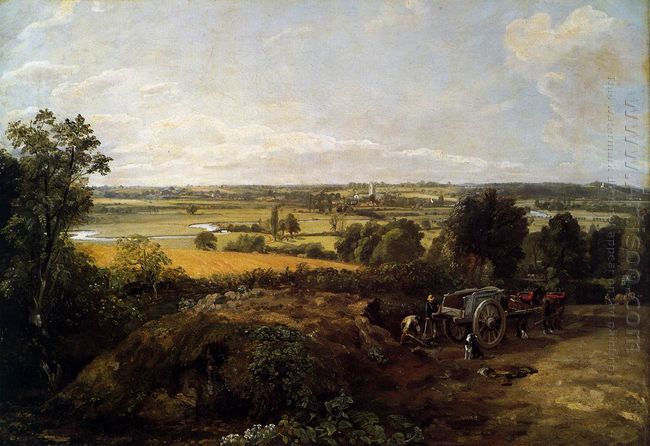The Stour Valley with the Church of Dedham was made by the famous British landscape painter John Constable in 1815. It is painted on canvas, measuring 55.6 x 77.8 cm. The painting is now collected in the Museum of Fine Arts, Boston. Constable indicates the time, date and weather conditions in each painting on the back, in order to establish the relationship between the dark weather and light. The painting uses the colors to demonstrate the light changes. The above shrub leaves besides the farmer is shown with green and light blue because of the sunshine. And the lower debris is dark, forming a strong contrast due to the influence of light. In the foreground, the right farmers and horses are working in the field with a strong realistic style. It’s said that this painting is probably completed outdoors and the sketching place is near the hometown of Constable.
The painting is the third work of Constable under the same theme. The painter has a very clear purpose. He wants to capture the light changes varying from minute to minute. As he says, “No two days are alike, nor even two hours, neither were there ever two leaves of a tree alike since the creation of the world.” The painter intends to depict the changes of the nature to try new ways of painting, light changes in the air, moving clouds in the sky and the dynamic relationship between the air and the trees. Undoubtedly Constable’s love of nature is from his deep feelings for the childhood of rural life. In addition to his nostalgic thoughts, the painter also tries new elements and gives up the traditional painting techniques to depict the light and weather changes. He uses pure white or pure yellow to depict the sunshine and quick style to show the coming wind. Another element of the work is the sign of painter’s works. In the lower right corner of the screen, Constable portrays a group of working people. Many of his works have the elements and his landscape paintings often appear working characters, which is an integral part and is also a conqueror of the nature.
